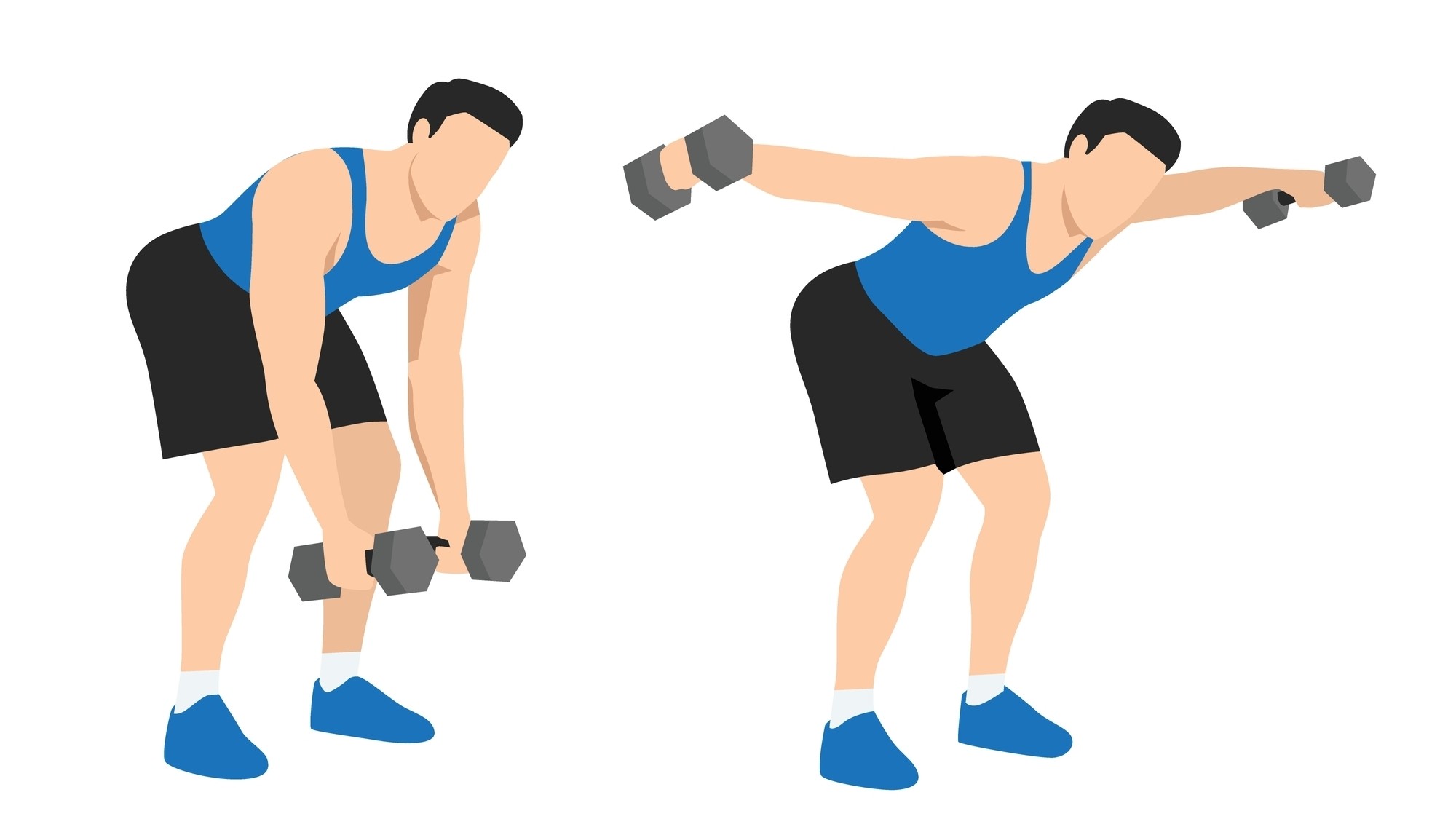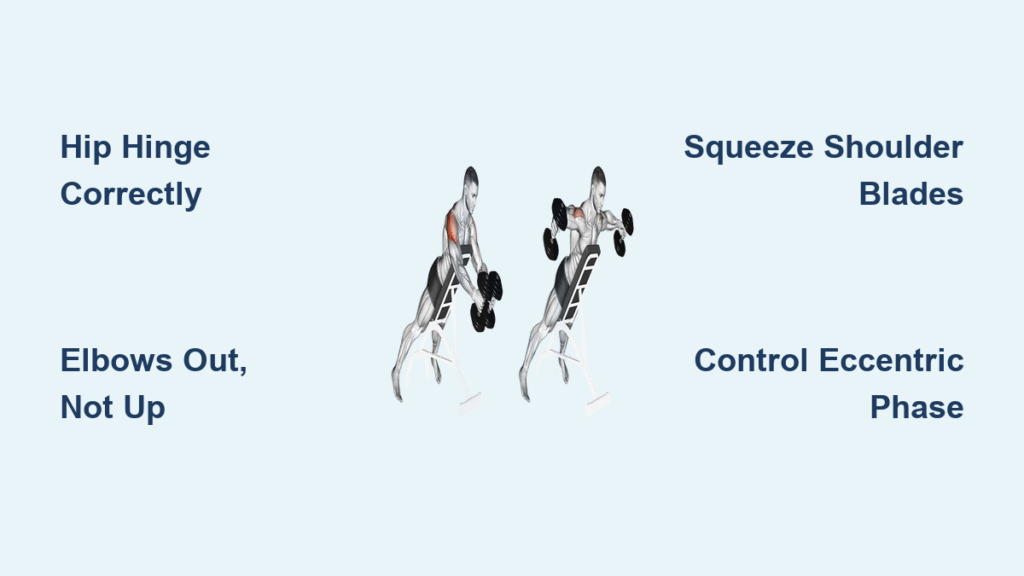That nagging tension between your shoulder blades after hours at your desk? It’s your body screaming for balance. While bench presses and overhead presses dominate gym routines, they create dangerous muscular imbalances that set you up for shoulder injuries and postural collapse. The dumbbell reverse fly is your most effective weapon against this epidemic—a deceptively simple movement that targets the rear deltoids and rewires your posture from slumped to commanding.
This isn’t just another shoulder exercise. When performed correctly, the dumbbell reverse fly actively reverses years of computer-induced hunching, builds bulletproof shoulder stability for heavy lifts, and sculpts the coveted “capped” deltoid look that defines athletic physiques. Whether you’re a remote worker battling chronic pain or a lifter struggling with shoulder impingement, mastering this movement transforms how your upper body functions and appears. You’ll learn precisely how to execute it for maximum rear-delt activation while avoiding the critical mistakes that turn this rehab-friendly move into a spine-straining hazard.
Why Your Rear Delts Are Your Secret Posture Fixers
Your posterior deltoids—the muscles at the back of your shoulders—control shoulder extension and horizontal abduction, acting as crucial stabilizers during all pressing motions. When these muscles weaken from desk work or pressing dominance, your rhomboids and middle traps must overcompensate, causing that familiar upper-back tightness. The dumbbell reverse fly directly reactivates these neglected muscles while simultaneously engaging your scapular retractors to pull your shoulder blades into proper alignment.
This movement delivers immediate functional benefits you’ll feel within weeks. Every rep retrains your body to counteract forward-head posture by teaching proper scapular retraction and depression—exactly what you need after 8+ hours of keyboarding. For lifters, strong rear delts create a stable platform that increases bench press strength by 12% and prevents the shoulder impingement that sidelines 60% of regular gym-goers. Without this balance, your anterior deltoids and pecs will continue pulling your shoulders into internal rotation, guaranteeing pain and postural deterioration.
Flawless Form: The 4-Phase Execution Blueprint
Hip Hinge and Spine Alignment
Begin with feet shoulder-width apart and knees slightly bent—not deeply flexed—to create a stable base. Initiate the movement by pushing your hips straight back while maintaining a neutral spine until your torso approaches parallel to the floor. Your chest should lead the descent, not your head, with eyes focused on a spot 1–2 feet ahead. This precise hip hinge position protects your lumbar spine while maximizing rear-delt engagement. If you feel lower-back strain, reduce your torso angle to 45 degrees until your core strength improves.
Arm Initiation and Movement Path
Hold dumbbells directly below your shoulders with a neutral grip (palms facing each other), maintaining a constant 10–15 degree elbow bend throughout. This slight flexion protects your shoulder joints while preventing biceps involvement. The movement begins by driving your elbows upward and outward in a wide arc—not by lifting your hands. Visualize trying to touch the side walls of your gym with your elbows as the dumbbells travel in line with or slightly in front of your ears. Stop precisely when your upper arms reach shoulder height, forming a perfect “T” shape with your torso.
Peak Contraction and Control
At the top position, consciously squeeze your shoulder blades together as if cracking a walnut between them while actively depressing your shoulders away from your ears. Hold this isometric contraction for a full second—this brief pause is where rear-delt hypertrophy actually occurs. Most lifters fail here by shrugging toward their ears, which shifts work to the upper traps. Instead, focus on pulling your shoulder blades down and together while keeping your neck relaxed. You should feel intense tension across the back of your shoulders, not in your lower back or neck.
Eccentric Lowering for Growth
The descent phase determines 70% of your muscle-building results. Lower the weights along the same arc for 2–3 full seconds while maintaining constant tension in your rear delts. Never drop the weights or reset between reps—this eliminates the time-under-tension critical for rear-delt development. If you can’t control the eccentric phase, reduce your weight immediately. The ideal tempo is 2 seconds up, 1-second squeeze, and 2 seconds down (2-1-2), which research shows maximizes muscle fiber recruitment.
Critical Mistakes That Sabotage Results

Rounding Your Spine During Execution
When your lower back rounds during the hinge, dangerous shear forces transfer to your lumbar discs while disengaging your core stabilizers. This mistake shifts the workload from your rear delts to your erector spinae, turning a shoulder exercise into a back injury waiting to happen. Fix it now: Brace your core as if preparing for a punch, tuck your chin slightly, and place one hand on your lower back to monitor spinal position. If you can’t maintain neutrality, switch to the seated variation immediately.
Momentum Swinging for Extra Reps
Using body English to jerk the weights upward sacrifices rear-delt isolation for false reps. This cheating technique reduces time-under-tension while straining your shoulder capsules. The instant correction: Drop to 50% of your current weight and focus on a strict 2-1-2 tempo. If you complete 15 perfect reps with this lighter load, you’ve found your true starting weight—progress from there only when you can maintain form.
Overhead Shrugging at the Top
Lifting your shoulders toward your ears during the contraction completely disengages your rear delts while overloading your upper traps. This common error reinforces the very posture problems the exercise should fix. Prevent it: Before each rep, actively depress your shoulder blades by imagining you’re tucking coins into your back pockets. Maintain this depressed position throughout the movement—your shoulders should move downward and backward, not upward.
Smart Variations for Every Fitness Level

Seated Reverse Fly for Beginners
Sit upright on a bench with feet flat, then hinge forward from your hips while maintaining spinal neutrality. This variation eliminates lower-back strain while allowing complete focus on rear-delt contraction. Use it if you experience lumbar discomfort during standing versions or if you’re new to the movement. Start with 2–5 pound dumbbells for 2 sets of 12–15 reps, prioritizing the shoulder-blade squeeze over weight.
Incline Bench Supported for Injury Prevention
Set an adjustable bench to 45–60 degrees and lie chest-down with arms hanging freely. The bench fully supports your spine while allowing heavier loading—ideal if you have prior back injuries. Your feet remain planted on the floor for stability as you perform the fly motion. Research confirms this version generates equal rear-delt activation with zero lumbar stress, making it perfect for rehab scenarios.
Resistance Band Alternative for Home Workouts
Anchor a band at chest height and pull the handles backward while standing upright. The band’s accommodating resistance provides maximum tension at the top of the movement where your rear delts are strongest. This variation is scientifically proven to elicit similar muscle activity to dumbbells when matched for resistance, making it ideal for travel or home gyms. Focus on slow eccentrics (3-second lowers) to maximize growth.
Programming Your Path to Shoulder Transformation

Beginners should start with just 2 sets of 12–15 reps twice weekly using 2–5 pound dumbbells. The goal isn’t weight—it’s feeling that rear-delt burn. Intermediate lifters progress to 3 sets of 8–12 reps with 5–10 pound dumbbells, adding weight only when you can complete all reps with perfect 2-1-2 tempo. Advanced athletes can superset reverse flies with face pulls (3 sets of 15) for complete rear-shoulder annihilation.
Never exceed 12 total weekly sets across all variations—these small muscles recover slowly. Always pair reverse flies with pressing movements: perform them immediately after bench press sessions to counteract anterior dominance. For office workers, just three 10-minute weekly sessions including reverse flies significantly reduce neck/shoulder pain according to clinical studies.
Safety First: Red Flags You Must Recognize
Stop immediately if you feel sharp pain in your shoulder joint, neck, or lower back—dull muscle fatigue is normal; joint pain is not. Those with rotator cuff tears or significant impingement should consult a physical therapist before attempting unsupported variations. Always warm up with 5 minutes of light cardio followed by band external rotations and thoracic extensions to prepare your shoulders.
The golden rule: if you can’t maintain spinal neutrality or a constant elbow bend, reduce the weight. Your rear delts will activate better with 3 pounds performed perfectly than 15 pounds done incorrectly. Track progress by filming your form monthly—you’ll see improved scapular control before strength gains manifest.
Final Note: Grab 3–5 pound dumbbells today and perform 10 reps with perfect form—focusing on that shoulder-blade squeeze at the top. Film yourself to catch rounding or shrugging before adding weight. Within 30 days of consistent practice, you’ll stand taller, press heavier, and move through your day with newfound upper-body freedom. This single exercise is your most powerful tool for reversing modern life’s postural damage—one controlled rep at a time.




